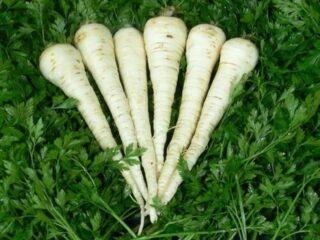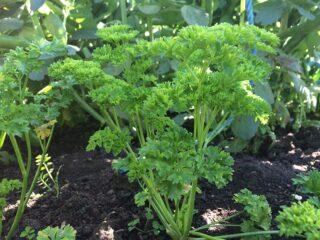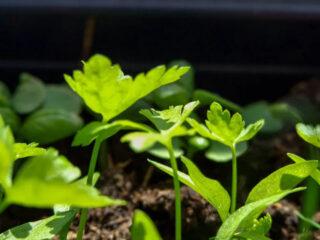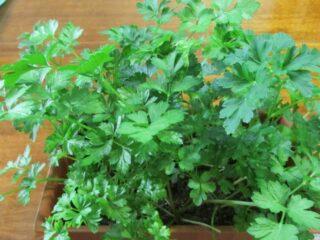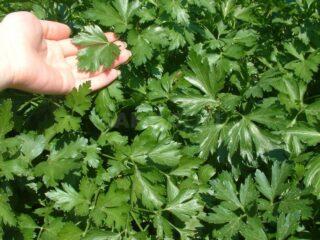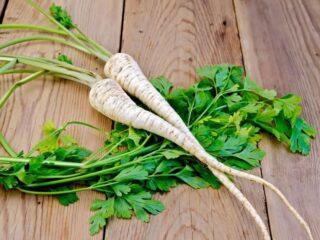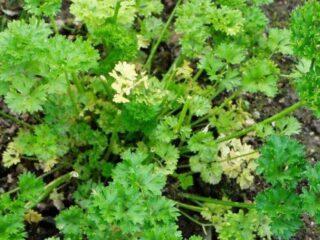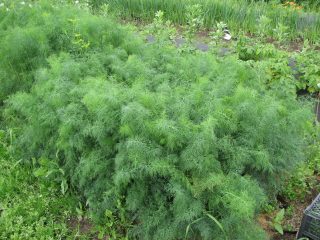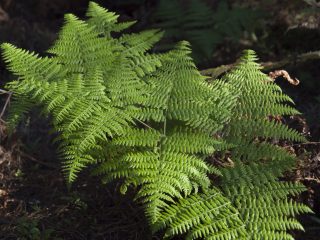Content
- 1 What parsley seeds look like from a photo
- 2 How to distinguish parsley seeds from carrot seeds
- 3 Shelf life of parsley seeds
- 4 Chemical composition of seeds
- 5 What are the benefits of parsley seeds?
- 6 The use of parsley seeds in folk medicine
- 7 How to use parsley seeds in cosmetology
- 8 Preparation and storage
- 9 Conclusion
Parsley seeds contain a complex of beneficial vitamins, minerals, flavonoids and antioxidants. Therefore, they are used as an additional treatment for prostatitis, colds, cystitis, inflammatory diseases of the female reproductive system and other pathologies. To do this, prepare hot or cold water decoctions. The seeds are also used in cosmetology, for example, to eliminate freckles and strengthen hair.
What parsley seeds look like from a photo
Parsley seeds (Latin name Petroselinum crispum) are formed in the second year of life. The plant produces an umbrella-shaped inflorescence that bears fruit. Flowering begins in mid-summer, and seed formation occurs from late August to early September. It is at this time that the seeds can be collected.
In appearance, they are two-seeds with an oblong ovoid shape. Color ranges from brown and golden to greenish. The grains are slightly flattened on the sides, the size is small - from 4 to 6 mm. Two parallel longitudinal stripes of a light yellow hue are noticeable on the surface.
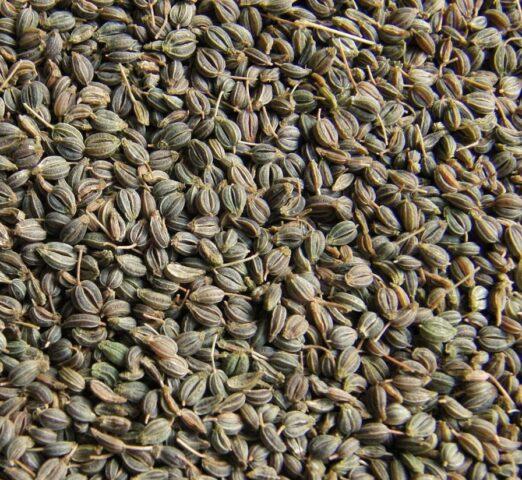
Parsley seeds are brownish-golden in color.
How to distinguish parsley seeds from carrot seeds
Parsley and carrots belong to the same Apiaceae family. Therefore, they are similar to each other in roots, herbs and seeds. Although there are also differences, they can be easily identified visually:
- Carrots have seeds covered with bristles. In parsley they are smooth.
- The vegetable's seed color is more saturated. The color is brown or dark orange.
- Carrot seeds have virtually no odor, while parsley seeds have a pronounced spicy aroma.
- The root grains have more elongated grains, they are elongated and larger in size.
Shelf life of parsley seeds
The shelf life of parsley seeds is two years. During this time, the shell does not have time to collapse, due to which the grain remains viable. The deadlines are always indicated on the packaging. The count should begin from the month of seed collection. It is also important to take into account that it is better to plant as early as possible - in this case the grains will sprout well.
Chemical composition of seeds
Parsley seeds contain quite a lot of valuable substances, including:
- vitamin C, groups B, K, E, A;
- antioxidants;
- essential oils;
- flavonoids;
- apiol;
- inulin;
- myristicin;
- iron;
- zinc;
- copper.
Glaviinin A is of particular value. This substance blocks the development of cancer cells, which helps in the prevention of oncological pathologies.
What are the benefits of parsley seeds?
Due to their rich chemical composition, seeds bring great benefits to the body:
- anti-inflammatory effect;
- pain reliever;
- antimicrobial;
- wound healing;
- diuretic effect;
- preventing edema;
- preventing the development of cancerous tumors;
- improved calcium absorption;
- restoration of well-being during colds, menstruation;
- normalization of the monthly cycle;
- elimination of cystitis symptoms;
- safe weight loss.
The medicinal properties of parsley seeds for men are also known. In folk medicine they are used as an additional remedy in the treatment of prostatitis. The seeds are also known to help maintain male strength and stamina.
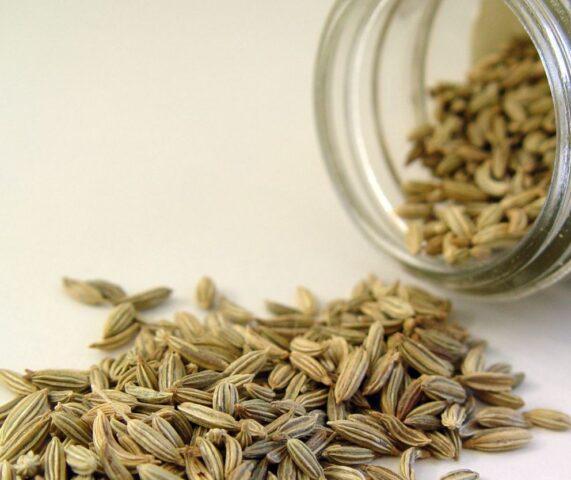
Before using decoctions on an ongoing basis, it is recommended to consult a doctor.
Parsley seeds not only have beneficial properties, they also have contraindications:
- individual intolerance to individual components;
- pregnancy (all trimesters) – substances contained in the grains can increase the tone of the uterus;
- migraines – in some cases, headaches may intensify;
- acute inflammation in the female reproductive system;
- low blood pressure;
- violation of blood clotting processes.
The use of parsley seeds in folk medicine
The benefits of parsley seeds for the human body have long been known in folk medicine. They are used to treat various diseases, including colds, cystitis, and blood pressure stabilization. The most effective recipes are described below.
Parsley seeds for prostatitis
To treat prostatitis, take a teaspoon of seeds (preliminarily crushed) and pour a glass of water at room temperature. Leave for 8-9 hours in the refrigerator, stirring occasionally.After this, filter and drink 50 ml three times a day half an hour before each meal.
You can prepare an infusion to enhance stamina and maintain male power. Take a tablespoon of crushed grains and pour a glass of boiling water, then leave for 8 hours, you can hold it longer. Consume in small quantities several times a day before meals. As a result, the entire volume of the glass must be consumed within a day, and then a new infusion must be prepared.
For colds
Parsley seeds also help in treating colds. To do this, take the crushed raw material in an amount of 2 g (a quarter of a teaspoon) and pour boiling water over it. Then leave for about 20 minutes, filter and take 1-2 tablespoons half an hour before each meal.
For cystitis
Parsley seeds are also used to treat cystitis. To do this, you need to take 60 g of raw material and put it in two glasses of milk. Heat without bringing to a boil and wait until the milk has evaporated by half. After this, remove from heat, strain and cool. Drink the entire volume during the day half an hour before each meal.
After this, they take a break for a week. If necessary, the cycle is repeated after consulting a doctor.
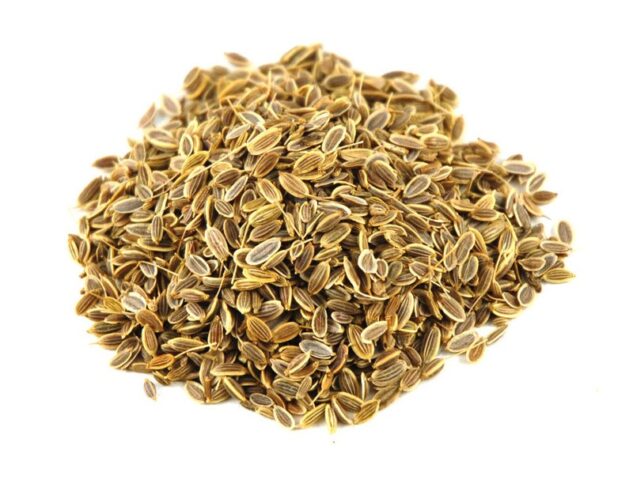
A decoction of milk is used to treat cystitis.
From pressure
To eliminate high blood pressure, you can use two recipes:
- Brew 2 teaspoons of parsley seeds with boiling water (a glass) and keep in a water bath for up to 20 minutes. Strain, cool and drink three times during the day (before meals).
- Grind the beans in a coffee grinder to a powder. Take 5 tsp. and pour half a liter of cold water.Leave for 8-12 hours, then filter and take half a glass three times a day. Immediately before use, mix thoroughly.
With high blood sugar
People with diabetes can benefit from adding parsley to their diet to lower blood sugar levels. There are two recipes for this:
- A teaspoon of crushed grains is poured into a glass of boiling water and left for 12 hours, the place should be warm. Then filter and take a tablespoon every four hours. The course of therapy lasts one month.
- Parsley seeds are mixed with dandelion roots, peppermint leaves and fennel leaves in a 1:1 ratio. Take 20 g of the mixture and pour boiling water for 15 minutes. Then filter and drink half a glass of tea before meals.
How to use parsley seeds in cosmetology
The grains of the plant can also be used for cosmetic purposes. They are used to eliminate freckles, as well as to strengthen and grow hair.
From freckles
To reduce pigmentation, you need to prepare an infusion of 10 g of raw materials. Pour it with a glass of cold water and let it sit overnight, and in the morning wipe your face with a napkin or cotton pad soaked in this liquid. You can also combine dill and parsley seeds in equal quantities, for example, 5 g each. Then prepare an infusion according to the same recipe.
Another recipe is to mix equal amounts of freshly squeezed parsley and dandelion juice and, without diluting, wipe your face. This product helps eliminate age spots, whiten the skin and make it more attractive. However, the recipe is seasonal.It is used only in spring and early summer.
For hair growth
To strengthen and grow hair, you need to prepare a homemade rinse. To do this, take 30-40 g of grains and add 800 ml of water, boil and cook for 15 minutes over very low heat. Then filter, cool and use to rinse your hair. It is better to wash with warm water, but there is no need to rinse off the product. It is advisable to leave it for one hour.
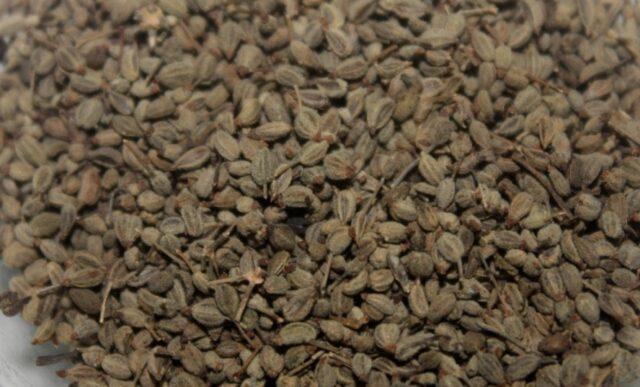
Parsley seeds are used not only for medicinal but also for cosmetic purposes.
For oily skin
To eliminate the problem of oily skin, take 2 tbsp. l. raw materials and pour a glass of boiling water. Then leave overnight. Then filter and add lemon juice - 1 tbsp. l. Wash your face and wipe with the resulting tonic several times a day.
You can mix it with table white wine, and after rubbing, apply ice cubes for a few minutes. This will get rid of oiliness and also improve the natural complexion. The finished infusion can be stored in the refrigerator, but for no more than two days.
Preparation and storage
Procurement of seed material begins in August or September. Umbrellas need to be carefully cut, tied into bundles and dried in a dark room with good ventilation. After the heads are completely dry, they are carefully shaken, the grains are collected and sent for storage.
It is important to keep planting material at a temperature of 14 to 17 degrees Celsius and humidity up to 60%. Direct sunlight should be excluded. Must be kept away from children. The place must be ventilated to prevent air stagnation, high humidity and mold formation.
Conclusion
Parsley seeds have no less benefits than the leaves and roots of this plant.They strengthen the immune system, activate the body's protective reserves, and have an anti-inflammatory and wound-healing effect. The raw materials are used for cosmetic purposes - for this, infusions are prepared with additional ingredients, for example, dill seeds or lemon juice.
